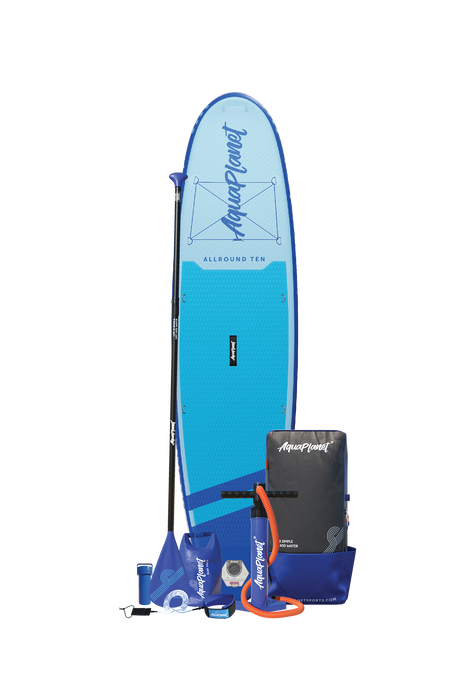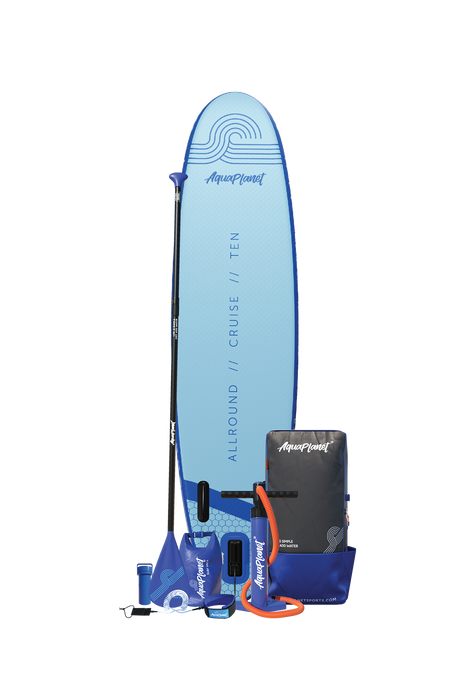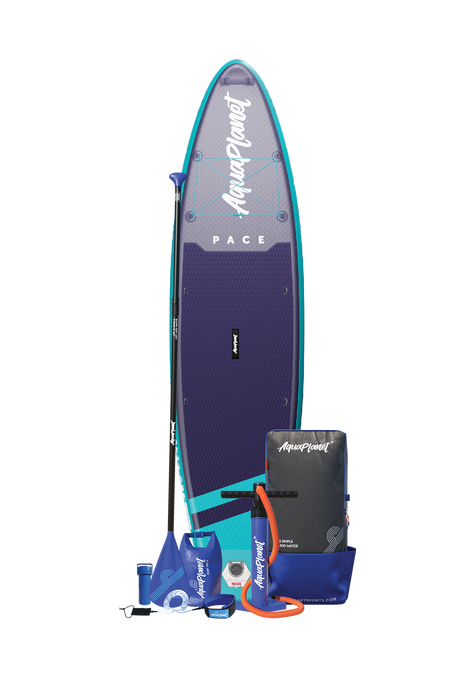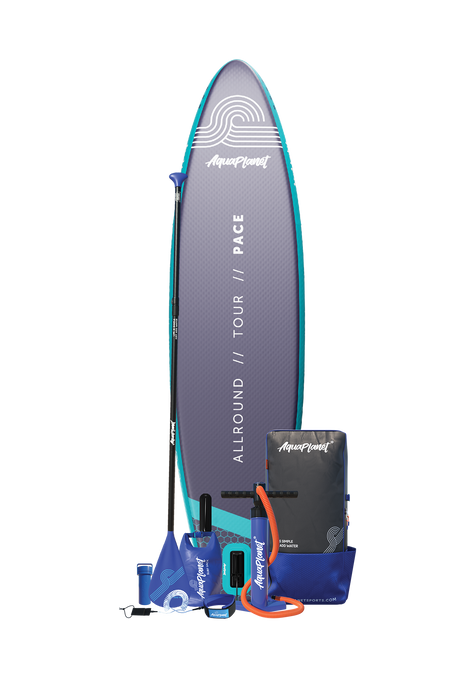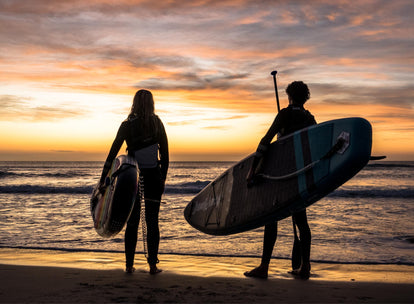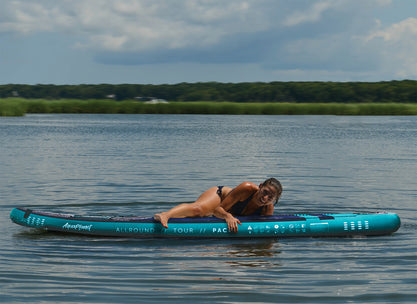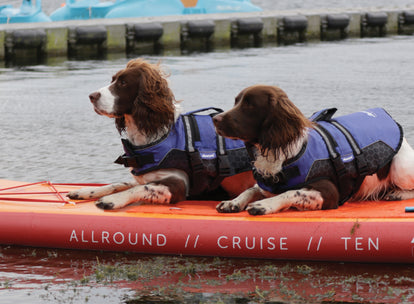With summer fast approaching, it is prime time for people to start eyeing up some new outdoor hobbies. If you’re thinking that trying your hand at paddle boarding might be your next challenge this summer then you’re probably thinking about how you even begin learning to paddle board.
Whilst there are a number of steps you can take to help learn paddle boarding more quickly - check out our top 10 tips to get paddleboarding in 30 minutes, there are also a number of things that you should avoid and these tend to be the top mistakes that SUP beginners make
1. Not buying the right paddle board

Coming in at number 1 on our top 5 SUP beginner mistakes, buying the wrong paddle board. It might come as a surprise to any newbie paddle boarders, but there is not a one size fits all when it comes to paddle boards, in fact there are varying length, widths, thicknesses and overall shapes. Picking the wrong paddle board for your activity and ability can make it harder to get the hang of the basic techniques and could even put you off pursuing paddle boarding in the long run.
For beginner paddle boarders a wider board will help with stability and help you find your balance quicker. Our starter boards are 30’ wide which gives a good degree of stability for most users whilst maintaining a good shape for speedy progress through the water, but we also have boards up to 34’ offering plenty of stability for paddlers who want a really stable platform and lots of deck space.
You’ll also want to make sure you have a board with enough volume for your weight. SUPs are normally listed with either a max. payload, a recommended paddler weight or a volume in litres. Try to select yourself a board with a bit of spare capacity above your weight for best performance and stability - and to leave capacity for extra kit, clothing or even a SUP pup passenger!
As a broad rule of thumb, the volume of your board (in litres) should be around double the number of your weight in kilos. If in doubt you can always call our customer care team who will be happy to help advise you on your best choice.
2. Holding the paddle wrong

The next most common mistake that SUP beginners make is using the paddle the wrong way round. Although you might think it's pretty self explanatory it's actually quite easy to be using it wrong and not even realise.
Poor paddle technique can actually have a big impact on how easily you are able to move through the water and your overall posture and technique - imagine trying to eat soup with a spoon that you’re holding the wrong way around. It can even result in bending or breaking your paddle.
So how do you hold a paddle board paddle correctly? Assuming you’ve adjusted the paddle to the right height, by adding about 4-6 inches to your height, next:
- Place one hand over the end of the handle
- The tip of the blade should be leaning away from you and be facing forward
- Your remaining hand should grab the paddle with a wide grip at a right angle to your other arm
- Reach well forward as you put the blade in at the front of the stroke, keeping the shaft upright
- Drive the paddle down in to the water, pulling your self towards it with both arms
- Don’t lever the paddle between your hands as you risk bending or breaking the shaft
- Bring the paddle out by your feet/hip, avoid dragging it in ot a long stroke behind your body
These are good initial rules, but there are quite a few more little tips and finesses you can add to make a really smooth efficient paddle stroke - checkout our Paddle Like A Pro course.
3. Paddling too far out from the paddle board
Another common SUP beginner paddling mistake is to use the paddle in the water too far away from the board itself. This is usually caused by holding the paddle too diagonally.
The more upright your paddle is, the closer the blade is going to be to your board and this will help to prevent the board turning away from the paddle stroke. If you hold the paddle less upright then the blade is naturally going to enter the water further away from the board, and in this case you’ll probably end up going round in circles or an extreme zigzag.
4. Not standing in the middle of the paddle board

A big part of the paddle boarding technique is balance, in order to do this successfully you’re going to need to stand in the centre of the paddle board. Our inflatable boards naturally sit flat on the water and resist rolling, but you’re going to need to do your part to help them out too.
The handle on our boards gives you a good indication of the mid-point of your SUP, so the easiest way to find where you will be most central is to stand with your feet on either side of the handle. It might feel natural to have your feet positioned as far apart as possible to help you balance, but trust us, this is not the case with paddle boarding. Keep your feet roughly shoulder width apart and relax your knees - which is also going to feel weird, but relaxed knees are going to help your body absorb the motion from the water and keep you more steady. Soak up any wobbles by moving vertically up and down, rather than backwards and forwards - think of your legs as suspension rods for your board.
Once you gain more confidence you might start moving around the board to trim it for quicker turns or to drive into the wind, but as a default paddling position being over the middle is ideal.
5. Fall into the water
Let's assume that you aren't going to be an immediate Olympic paddle boarding pro and that there may be occasions where you lose your balance enough to fall. Now, a lot of people have the natural reaction to fall on the board, DO NOT DO THIS!
Yes you might get your hair wet falling into the water and bruise your pride in the process but water is soft and your board is hard. Falling on your board can not only damage it, but people have sustained pretty painful injuries which are a lot less fun than getting your hair wet and a mouthful of seawater.
You should be wearing your Buoyancy Aid and leash, so no need to worry about the water or getting separated from your SUP! When you climb back on, remember to keep your feet out behind you, not under the board and try to ‘swim over’ the board to get right over the middle before kneeling back up.
We hope these top 5 SUP beginner mistakes will help you to nail your paddle boarding technique and be more prepared if you are starting your first SUP summer this year!

